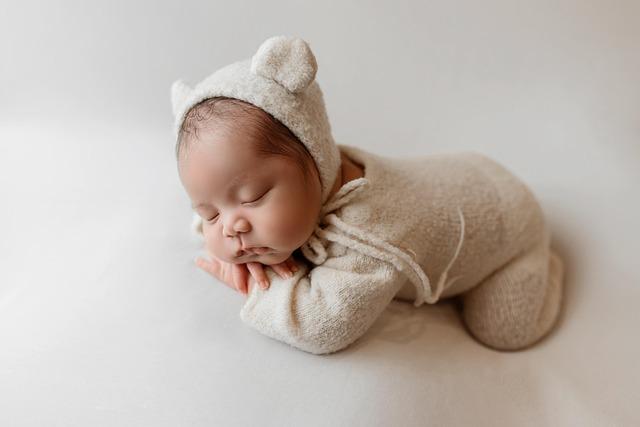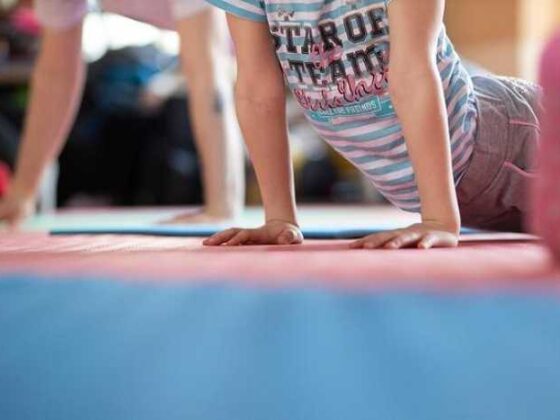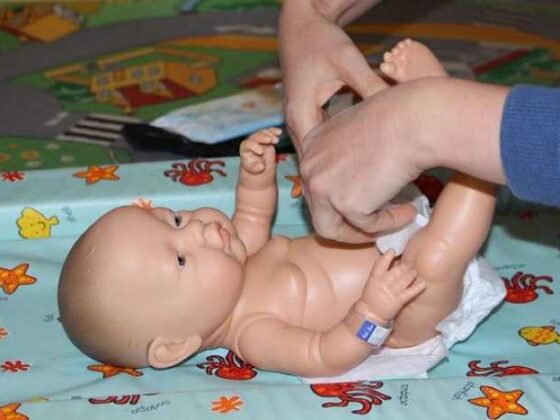Hey there, parents and caregivers! If you’ve ever wondered how to turn those busy little moments with yoru baby into fun learning opportunities, you’re in the right place. Teaching your baby new skills doesn’t have to be a stressful task – in fact, with the right approach, it can be a joyful adventure for both of you. From simple games to playful routines, these baby training tips will make learning feel like playtime, helping your little one grow happy, confident, and curious. Ready to make parenting a bit easier and a lot more fun? Let’s dive in!
Choosing the Right Time to Start Baby Training for Maximum Fun
every baby develops at their own pace, so tuning in to their unique signals is key before diving into any training activities. Rather of rushing, look for moments when your little one shows curiosity and engagement. This could be during playtime when they reach for toys, or when they focus intently on colorful objects. Starting too early or too late can lead to frustration for both of you, so aim for those natural sparks of interest to make the experience enjoyable and stress-free.
to help you get a feel for your baby’s readiness, keep an eye out for these early signs:
- Ability to sit up with minimal support
- Interest in imitating sounds or movements
- Increased attention span during interactive play
These milestones suggest your little one is ready to embark on fun learning adventures.Remember, the goal is not to stick to strict timelines but to create a playful environment where your baby’s enthusiasm leads the way!
Creative Play Ideas That Boost Learning and Keep Babies Engaged
Engaging babies in playful activities that stimulate their senses and curiosity is key to early learning. as an exmaple,using textured toys like soft blocks,crinkly fabrics,and rubbery rings can encourage tactile exploration. Singing songs with motions not only supports language skills but also helps develop motor coordination. To keep things exciting, rotate toys regularly and introduce colorful, interactive books with flaps or mirrors that invite discovery. These activities aren’t just fun-they lay the foundation for cognitive and emotional growth as babies learn to connect cause and effect, recognize patterns, and build trust through interaction.
Another great way to boost learning is to incorporate everyday objects into creative play. For example,simple kitchen tools like wooden spoons,plastic bowls,or measuring cups become fantastic instruments for banging,stacking,or sorting. This kind of open-ended play nurtures problem-solving and fine motor skills. Check out the table below for some easy, mess-free baby play ideas you can try right now:
| Activity | Benefits | Materials Needed |
|---|---|---|
| Bubble popping | Hand-eye coordination & sensory fun | Bubble wand & solution |
| Hide and seek toys | Memory & object permanence | Small plush toys or rattles |
| Water play | Motor skills & cause-effect learning | Bowl of water & plastic cups |

Simple Everyday Activities That Turn Into Learning Opportunities
Everyday moments are packed with hidden chances for little learners to explore their world. Turning simple routines like mealtime, bath time, or even a walk to the mailbox into playful lessons helps spark curiosity without feeling like “work.” For example, naming colors and shapes on your child’s plate during meals or counting bubbles in the bath introduces basic concepts effortlessly. These mini-interactions create a nurturing atmosphere where children feel safe to explore and ask questions, making learning a natural part of their day.
Hear are a few ideas you can easily weave into your daily life to keep the fun and learning going strong:
- Sorting laundry: Teach colors and categories by matching socks and clothes.
- Grocery shopping: Count fruits, identify letters on labels, or discuss textures.
- Outdoor exploration: Collect leaves or rocks and talk about different shapes and sizes.
| Activity | Learning Focus | Example |
|---|---|---|
| Bath Time | Counting & Colors | Count bubbles, name toys |
| Meal Readiness | Vocabulary & Senses | Smell spices, name foods |
| Walks Outside | Observation & Nature | Spot birds, identify plants |
Tips for Staying Patient and Making Training Stress-Free for Both of You
Keeping calm during your child’s learning journey can transform training from a stressful chore into an exciting adventure for both of you. Remember, consistency paired with gentle encouragement works wonders-celebrate even the tiniest victories and avoid rushing the process. When frustration creeps in, take a deep breath, step back for a moment, and try to redirect your energy into positive reinforcement. Patience isn’t just about waiting quietly; it’s about maintaining a nurturing mindset, recognizing that every child learns at their own pace.
to make training sessions more enjoyable, set clear, achievable goals and sprinkle in plenty of play.Using visual cues, songs, or simple games keeps your little one engaged and helps solidify new skills without pressure. Here are some simple ways to keep things stress-free:
- Short and Sweet: Keep sessions brief – toddlers have tiny attention spans.
- Consistent Routine: predictable schedules make kids feel secure and ready to learn.
- Positive Praise: Focus on what your child can do rather of what they struggle with.
- Adaptability: If something isn’t working, change it up and stay open-minded.
- Break Time: When frustration hits, a rapid break often resets the mood for both of you.
| Tip | Why it effectively works |
|---|---|
| Celebrate Small Wins | Builds confidence and motivation |
| Use Playful Learning | Makes training fun and memorable |
| Keep Sessions brief | Matches attention span and prevents burnout |
Q&A
Q&A: Baby Training Tips - Making Learning Fun and Easy for Kids
Q: When should I start training my baby to learn new things?
A: As early as possible! babies are little sponges from day one.Simple activities like talking, singing, and showing them colorful toys can kickstart their learning journey. No need to be formal-just make it a natural part of your day.
Q: How can I make learning fun instead of stressful for my baby?
A: Keep it playful and pressure-free! Use games, songs, and toys that catch their attention. If they lose interest, switch it up or take a break. Remember, it’s about exploring and having fun, not hitting milestones like a checklist.
Q: What are some easy baby training activities I can do at home?
A: Lots! Peek-a-boo is a classic that teaches object permanence, gentle clapping or tapping helps with motor skills, and reading colorful books introduces language early. Even talking about what you’re doing during daily chores builds their vocabulary!
Q: how long should each training or learning session be?
A: Keep it short and sweet. Babies have tiny attention spans-think 5 to 10 minutes tops. If your baby seems engaged, great! If not, no worries, come back later or the next day.
Q: Is it okay to let my baby learn through screens?
A: the jury’s out,but most experts suggest limiting screen time for babies under 18 months. Real-world interaction is way more effective. If you do use screens, choose quality, age-appropriate content and watch together to keep it interactive.
Q: What if my baby doesn’t seem to be learning as quickly as other kids?
A: Every baby is unique and develops at their own pace. Try not to stress or compare.Keep offering fun learning chances and lots of love. If you’re truly concerned, chatting with your pediatrician can definitely help ease your mind.Q: How can I encourage my baby to try new things?
A: Be their biggest cheerleader! Celebrate small wins with smiles and claps. Show excitement yourself-it’s contagious.Sometimes,just joining in and modeling the activity encourages them to jump in.
Q: Can siblings or other family members help with baby training?
A: Absolutely! Learning is a team effort. Older siblings and family bring fresh energy and different ways to engage your baby. Just make sure everyone’s gentle and patient,keeping the experience positive.
Q: What’s one tip that will make all baby training easier?
A: Follow your baby’s lead! If they’re tired, cranky, or uninterested, it’s okay to pause. The best learning happens when they’re happy and curious-not forced. Trust their cues and enjoy the journey together.
Got more questions or fun baby training stories? Drop them in the comments! let’s make learning an adventure for our little ones. 🍼✨
Wrapping Up
And there you have it-baby training doesn’t have to be stressful or complicated! Remember, the key is to keep things fun, playful, and pressure-free. Every little giggle, every tiny step forward is a win worth celebrating. So keep experimenting with what clicks for your little one, stay patient, and enjoy these precious learning moments together. After all, the best lessons are the ones wrapped in love and laughter.Happy training! 😊✨











